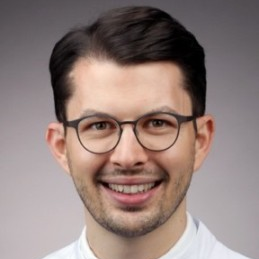Molecular Advances in Dental Pulp Tissue Engineering 2.0
A special issue of International Journal of Molecular Sciences (ISSN 1422-0067). This special issue belongs to the section "Molecular Pathology, Diagnostics, and Therapeutics".
Deadline for manuscript submissions: closed (30 April 2024) | Viewed by 1233
Special Issue Editors
Interests: pulp biology; tissue engineering; dentin matrix proteins; dental pulp stem cells
Special Issues, Collections and Topics in MDPI journals
Special Issue Information
Dear Colleagues,
Protected by the surrounding mineralized barriers, such as enamel, dentin and cementum, dental pulp is a functionally versatile tissue that fulfils various tasks. Besides the perception of thermal and mechanical stimuli as a warning system as well as the deposition of dentin, the pulp exerts a variety of immunological functions, in terms of both recognition and of defense. In young patients, a sound and functional dental pulp is indispensable for the completion of root development, and early pulp necrosis results in fracture-prone teeth with fragile root walls. Whether in young or adult patients, the loss of pulp tissue after caries or trauma requires therapeutic intervention by root canal treatment and filling with a synthetic material, which results in the loss of all its physiological functions.
In recent years, creative and multi-faceted attempts have been made to regenerate this valuable tissue using advanced molecular biology methods. Promising approaches based on tissue engineering and regenerative medicine (TERM) have been developed for this purpose. These stem-cell-based or primarily cell-free procedures use specifically customized scaffold materials and biologically active molecules to achieve true regeneration of the dental pulp in terms of both its architecture and function. Several of these approaches are already taking requirements for clinical application into consideration.
This Special Issue aims to present the scientific progress in this field of research. The goal is to collect innovative studies in the field of stem cell biology, scaffold material development or molecular signaling that contribute to the transfer of this knowledge from the bench to the dental clinic.
More published papers could be found in the closed Special Issue: Molecular Advances in Dental Pulp Tissue Engineering.
Prof. Dr. Matthias Widbiller
Prof. Dr. Kerstin M. Galler
Guest Editors
Manuscript Submission Information
Manuscripts should be submitted online at www.mdpi.com by registering and logging in to this website. Once you are registered, click here to go to the submission form. Manuscripts can be submitted until the deadline. All submissions that pass pre-check are peer-reviewed. Accepted papers will be published continuously in the journal (as soon as accepted) and will be listed together on the special issue website. Research articles, review articles as well as short communications are invited. For planned papers, a title and short abstract (about 100 words) can be sent to the Editorial Office for announcement on this website.
Submitted manuscripts should not have been published previously, nor be under consideration for publication elsewhere (except conference proceedings papers). All manuscripts are thoroughly refereed through a single-blind peer-review process. A guide for authors and other relevant information for submission of manuscripts is available on the Instructions for Authors page. International Journal of Molecular Sciences is an international peer-reviewed open access semimonthly journal published by MDPI.
Please visit the Instructions for Authors page before submitting a manuscript. There is an Article Processing Charge (APC) for publication in this open access journal. For details about the APC please see here. Submitted papers should be well formatted and use good English. Authors may use MDPI's English editing service prior to publication or during author revisions.
Keywords
- tissue engineering and regenerative medicine (TERM)
- pulp regeneration
- scaffold materials
- stem cells
- bioactive molecules
- dentin matrix proteins







